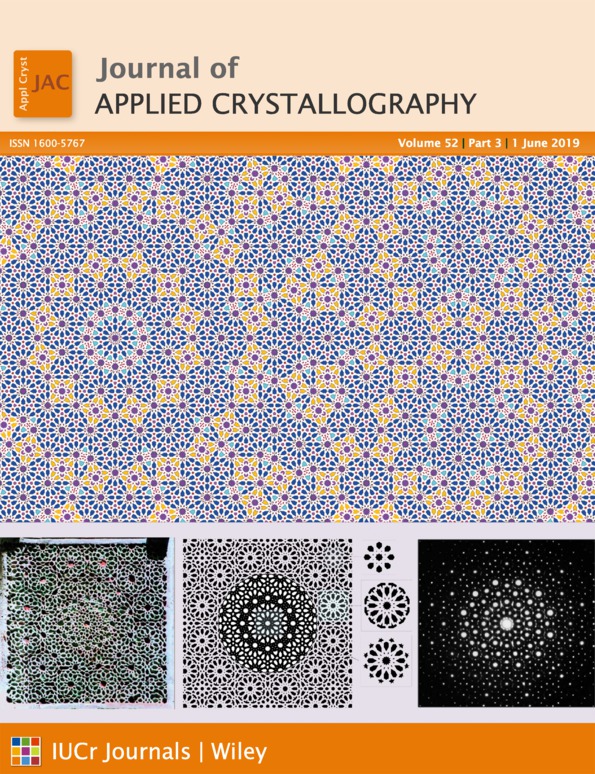Exploiting the potential of beam-compressing channel-cut monochromators for laboratory high-resolution small-angle X-ray scattering experiments
Abstract
A systematic study of beam-compressing monolithic channel-cut monochromators (CCMs) with a V-shaped channel was performed. The CCMs were optimized in terms of a chosen output beam parameter for exploitation in laboratory high-resolution small-angle X-ray scattering (SAXS) and grazing-incidence SAXS (GISAXS) experiments. Ray-tracing simulations provided maps of particular Ge(220) CCM output beam parameters over the complete set of asymmetry angles of the two CCM diffractions. This allowed the design and fabrication of two dedicated CCMs, one optimized for maximum photon flux per detector pixel and the other for Kα2 suppression. The output beam quality was tested in SAXS/GISAXS experiments on a commercial setup with a liquid-metal-jet Ga microfocus X-ray source connected to 2D collimating Montel optics. The performance of the CCM optimized for maximum photon flux per detector pixel was limited by the quality of the inner channel walls owing to a strongly asymmetric design. However, the CCM optimized for Kα2 suppression exhibited an excellent resolution of 314 nm in real space. This was further enhanced up to 524 nm by a parallel Ge(220) CCM in the dispersive configuration at a still applicable output flux of 3 × 106 photon s−1. The 314 nm resolution outperforms by more than 2.5× the upper resolution limit of the same setup with a pinhole collimator instead of the CCM. Comparative SAXS measurements on the same setup with a Kratky block collimator as an alternative to the CCM showed that the CCM provided more than one order higher transmittance at a comparable resolution or twice higher resolution at a comparable transmittance. These results qualify CCMs for a new type of integrated reflective–diffractive optics consisting of Göbel mirrors and V-shaped CCMs for the next generation of high-performance microfocus laboratory X-ray sources.




